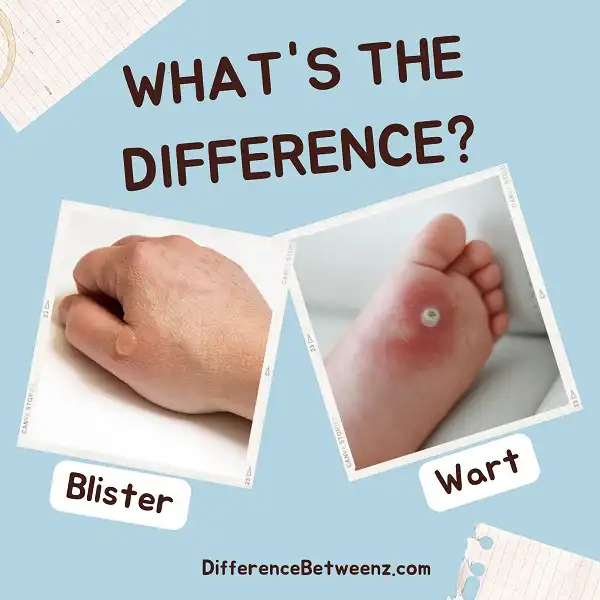Although they may look similar, there is a big difference between a blister and a wart. A blister is usually caused by friction or heat, while a wart is caused by the human papillomavirus (HPV). Blisters are generally filled with fluid, while warts are solid. Blisters can be treated by applying a bandage or ointment, while warts can be treated with over-the-counter medications or by seeing a doctor. So, if you’re not sure what’s causing that bump on your skin, make sure to get it checked out to determine if it’s a blister or wart.
What is a Blister?
Blisters are small pockets of fluid that form on the skin. They are usually caused by friction or burns and can be quite painful. Blisters can occur anywhere on the body, but they are most common on the hands, feet, and lips. Blisters are typically filled with either clear fluid or pus and are surrounded by red, inflamed skin. Most blisters will heal on their own within a few days. However, larger or more painful blisters may require medical treatment. Blisters can be prevented by keeping the skin clean and dry and using appropriate padding when engaging in activities that may cause friction.
What is a Wart?
Warts are common skin growths that can occur on any part of the body. They’re usually harmless, but can be a source of embarrassment or discomfort. Warts are caused by a viral infection and are contagious. There are many different types of warts, and they can vary in size, shape, and color. Warts can be treated with over-the-counter medications, but some may require medical treatment. If you have a wart, it’s important to keep the area clean and dry, and to avoid picking or scratching the wart, as this can spread the infection.
Difference between a Blister and a Wart
Blisters and warts may both look like raised bumps on the skin, but they are actually quite different. Blisters are usually filled with clear fluid and can be caused by friction, burns, or infections. Warts, on the other hand, are usually caused by viruses and often have a rough, scaly surface. You can usually tell the difference between a blister and a wart by their appearance and location on the body. Blisters tend to be smaller and appear more on areas that experience a lot of friction, such as the hands or feet. Warts tend to be larger and can appear anywhere on the body but are most common on the hands or feet. If you’re not sure whether you have a blister or a wart, it’s best to consult a doctor.
Conclusion
Blisters and warts may look similar, but they are two different conditions. If you’re not sure which one you have, it’s important to get a diagnosis from a doctor. In the meantime, here is some information about blisters and warts that can help you take care of them.


